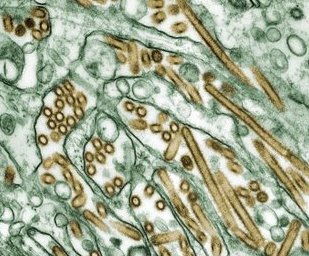China reported an outbreak of highly pathogenic H5N1 bird flu at a farm in its northwest Qinghai province, the Paris-based World Organization for Animal Health (OIE) said on Tuesday, June 26, 2018; quoting a report from the Chinese agriculture ministry.
According to Reuters, this is the first case of the H5N1 strain of flu to be reported on a Chinese poultry farm since 2014, based in a search of OIE's database of notices from the Chinese agriculture ministry.
However, the virus has been reported in Nepal and Bhutan this year, and both countries that share borders with China's northwest region.
The virus killed 1,050 broiler chickens out of a flock of 1,615 at a farm in Haixi Mongolia and Tibetan autonomous prefecture. In addition, the remaining birds were killed and disposed of according to the ministry.
Highly Pathogenic
One of the most important acronyms a person may have heard in recent years is H5N1, which is the name of the bird flu strain that proves to be a problem for many countries even today.
H5N1 has already caused a flu pandemic in birds and infected about 230 people since it was first reported.
So why is it called H5N1?
Every time a new flu virus is identified, it is named based on its composition. In the case of the H5N1, it is named after two proteins - hemagglutinin and neuraminidase - that are on the surface of the virus. These two proteins then form the H and the N abbreviation.
The numbers that are included in the virus name signal the genetic change in the virus. Some combinations of H and N cause serious illness and death, while others only cause mild symptoms. Flu viruses that begin with H5 or H7 are highly likely to make birds and people sick.
Some strains of the often lethal H5N1 virus can be transmitted to humans. The newest case is the sixth case of highly pathogenic bird flu reported by China this year, compared with just four cases reported to the OIE in 2017, according to its website.
Most of the cases reported in China this year have been a highly pathogenic form of H7N9, the same strain that killed hundreds of people in China last year, hitting consumer demand and leaving the egg and broiler industries reeling.
On the other hand, the virus did not have a immense impact on poultry last year but has mutated into a more lethal form. All four H7N9 cases reported this year were on layer farms - or farms producing eggs - with the most recent case killing more than 9,000 hens in northeastern Liaoning province.
It can be noted that the cases still occurred despite a nationwide vaccination program against the virus that began last autumn.
In addition to that, China has also reported a case of the H5N6 strain on a duck farm in March of 2018.








